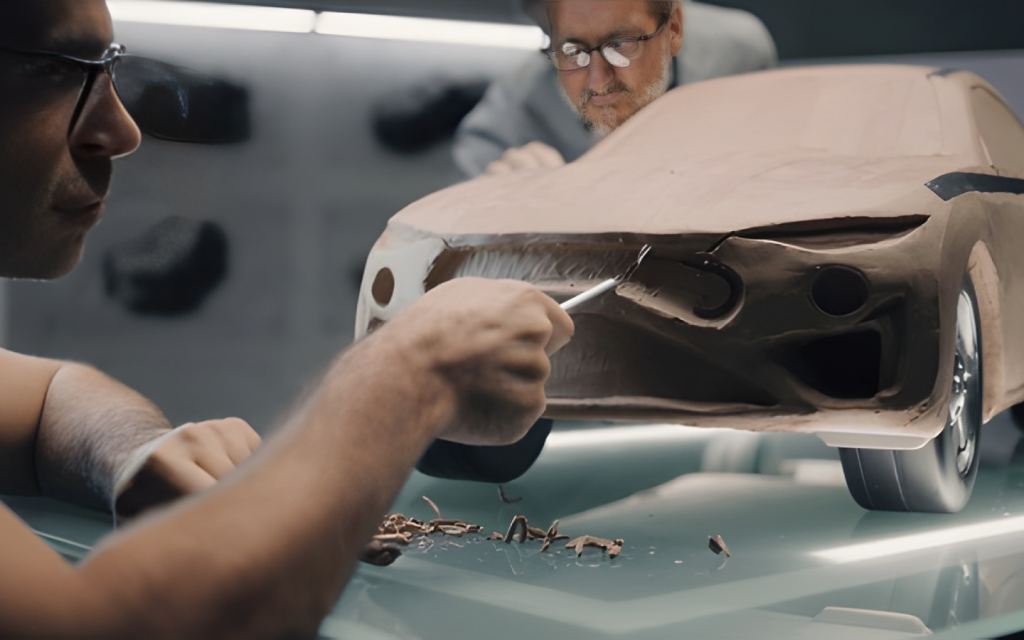All About Clay Modelling in the Automotive Industry
- Importance of Clay Modelling
- Modelling Process
- Scale and Full-Size Models
- Automotive Styling and Design
- Human Expertise
- FAQs
Clay modelling in the automotive industry remains one of the most critical stages in vehicle development, even in an era dominated by CAD software and virtual simulation. Automotive clay modelling provides designers and engineers with a full-scale, physical representation of a vehicle before it enters costly prototype tooling or production. This tangible model enables decision-makers to evaluate proportions, surface continuity, reflections, ergonomics and feasibility with far more accuracy than digital screens can offer.
Why Car Clay Modelling Is Still Essential

Modern automotive design processes rely heavily on digital tools for geometry, packaging and aerodynamic simulation. Yet visual perception is fundamentally different when a physical object occupies real space under natural lighting. Surface transitions that may look smooth on screen often display subtle distortions or exaggerated reflections when translated into physical form.
Automotive clay modelling acts as the final visual and tactile filter in the evolution of car design, ensuring the design works aesthetically and functionally in reality. This physical proofing step is one reason OEMs continue to invest in full-scale clay model car design despite the high cost and labour involved.
From Digital Sketch to Physical Model
The workflow begins with digital concept development, followed by CNC milling that roughs out the basic form from a lightweight internal structure called the buck. Designers then apply warmed industrial clay, which is sculpted by hand to achieve Class A surfaces. This stage is highly skilled and forms the foundation of 3D clay modelling for cars. Clay car sculpting techniques involve a wide range of precision tools, rakes, ribbon tools and sweeps, to refine the shape down to the millimetre.
Once the exterior shape is complete, the surface is often wrapped in a specialised vinyl film to mimic painted bodywork under changing light. The model can then move to wind tunnel testing, aerodynamics refinement, ergonomics assessment or executive design review.
Materials and Build Method
Car design prototype materials are engineered specifically for repeat use and machining accuracy. Today’s industrial clay is sulphur-free, lightweight, heat-softened and stable under scanning. The internal frame or armature is usually aluminium to support structural rigidity, while foam blocks reduce the amount of clay required. This engineering enables the rapid transformation of the structure during iterative design phases, especially during automotive prototype development.
Scale and Full-Size Models
The process doesn’t start with a full-scale 1:1 model right away. Teams typically sculpt 1:4 or 1:5 scale mock-ups before committing to full-scale car modelling. Once final proportions are approved, a full-sized automotive prototype clay model is created for final evaluation.
Physical Validation and Aerodynamic Testing
Beyond aesthetics, clay models assist in engineering testing. The malleability of the medium means the design team can make aerodynamic refinements within minutes during wind tunnel testing. This would be impractical or extremely time-consuming in purely digital environments. The clay model is also critical for ergonomic checks, especially inside cabin bucks used to validate seat height, visibility, pedal reach and dashboard layout.
A Core Part of Automotive Styling and Industrial Design

The clay phase sits at the intersection of industrial design in automotive engineering and production feasibility. While Computer-Aided Design (CAD) provides geometric accuracy, the clay stage ensures the emotional and visual qualities of the car reach a production-ready level. For this reason, car design clay modelling is still taught in major automotive design schools and remains a core part of vehicle concept development in all global OEMs. Takumi Craftsmanship in Lexus cars is a fine example of the importance of clay modelling in automotive styling.
Human Expertise and Modern Hybrid Workflow
Although digital technology enables speed and precision in the early stages, the craftsmanship of experienced modellers remains indispensable. These specialists interpret design intent through hand sculpting, achieving the final surface quality. After approval, the clay model is scanned back into CAD using 3D metrology systems. This completes the hybrid feedback loop that bridges craft-based sculpting with digital engineering. The final production body panels are then designed directly from this scanned surface, ensuring that the physical design intent is preserved.
FAQs
What are the main advantages of using clay 3D models in car development?
3D models allow full-scale, real-world evaluation of proportions and refinement of concept cars.
How does the process of ‘Takumi’ enhance vehicle design accuracy?
Takumi master sculptors refine surfaces by hand with millimetre precision, ensuring the final shape captures aesthetic intent that digital tools alone cannot achieve.
Can clay modelling techniques be applied to designing electric or autonomous vehicles?
Yes, clay modelling is widely used for electric cars and autonomous vehicle development to validate aerodynamics, packaging, sensors and exterior surfacing in real physical space.
Automotive clay modelling endures because it solves a problem that digital tools alone cannot: physical judgement of real-world form. Whether used to test aerodynamic changes, refine ergonomics or verify aesthetic quality, clay continues to provide the most reliable foundation for a production-ready concept.
From early sketches to final full-size validation, it is an integral checkpoint in the lifecycle of automotive prototype development. As long as car companies rely on precision, aesthetics and market acceptance, clay will remain at the centre of vehicle concept development and full-scale automotive evaluation.
Many new cars for sale in the UAE go through the clay modelling process during their initial phase of production and testing. The concept helps achieve precise automotive design and engineering.
For more insights on automotive industry design and manufacturing processes, stay connected with the UAE’s favourite car blog.
Comments
Post a Comment